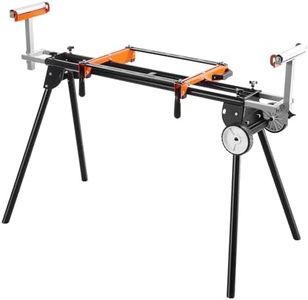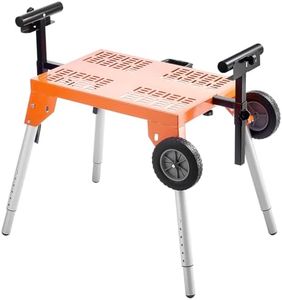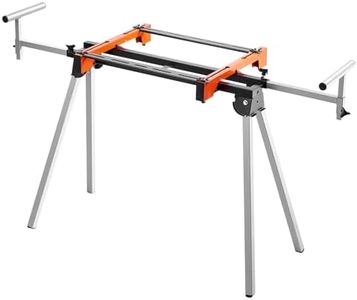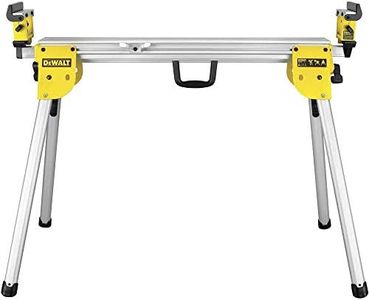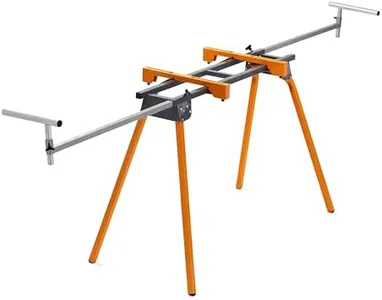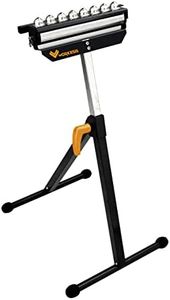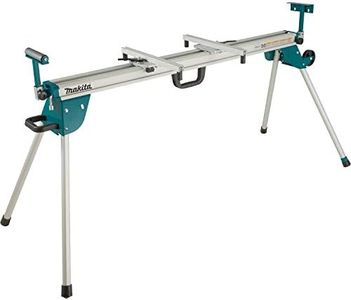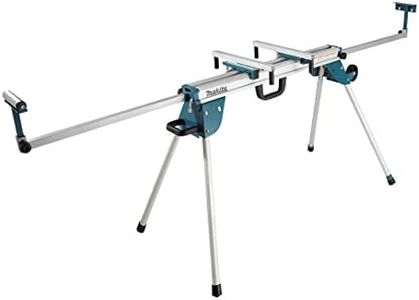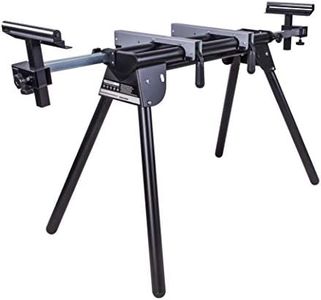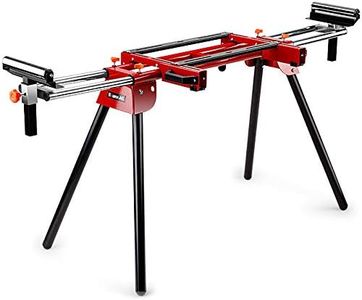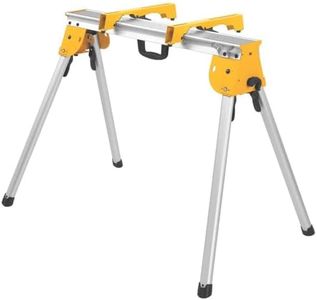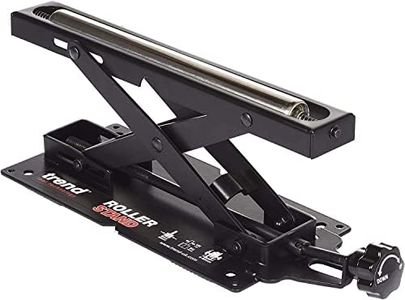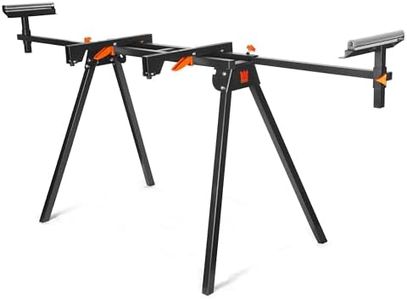We Use CookiesWe use cookies to enhance the security, performance,
functionality and for analytical and promotional activities. By continuing to browse this site you
are agreeing to our privacy policy
10 Best Miter Saw Stand
From leading brands and best sellers available on the web.By clicking on a link to a third party's website, log data is shared with that third party.
Buying Guide for the Best Miter Saw Stand
Choosing a miter saw stand may seem straightforward, but picking the right one for your needs can make working with your saw much safer, more comfortable, and much more efficient. The right stand provides a stable, elevated workspace for your saw, improves portability, and can even increase overall accuracy and convenience on the job. Before buying, it’s good to consider how, where, and how often you'll use the stand, and what features are essential to your work style or space.Weight CapacityWeight capacity refers to the maximum amount of weight the stand can safely support, including the miter saw and any large materials you might be cutting. This is important because if the stand can’t support the combined weight, it may become unstable or even collapse. Values can range from light-duty stands holding around 200 pounds, suitable for small saws and light trim work, to heavy-duty stands supporting 500 pounds or more for larger saws and big lumber. To choose the right one, think about the largest and heaviest material you’ll typically work with. If you mostly make small cuts with lighter boards, a lighter stand will suffice. For construction or remodeling with heavy lumber, opt for a higher capacity.
Portability and FoldabilityPortability means how easy it is to move the stand around your workshop or from job site to job site. Foldability relates to how compactly the stand collapses for transport or storage. These factors are important if you work in multiple locations or don’t have much storage space. Some stands are lightweight or have wheels for easy moving, while bulkier models may be heavier but sturdier. If you plan to carry your stand often, look for one that folds easily and has handles or wheels. If it will mostly stay in one spot, this may be less critical.
Universal Saw CompatibilityThis refers to whether the stand can work with most brands and sizes of miter saws, or if it only fits specific models. Universal compatibility is important if you might want to upgrade or change your saw in the future without needing to buy a new stand. Values range from stands that are adjustable and can take nearly any saw, to those with custom attachments made only for certain brands. For maximum flexibility, look for stands labeled as universally compatible, especially if you aren’t set on one saw.
Extension Arms or Material SupportsExtension arms are slide-out supports at each end of the stand that help hold long pieces of material steady while you cut. This is especially important if you regularly cut long boards, as unsupported ends can sag and lead to inaccurate or unsafe cuts. Some stands have no extensions, while others provide several feet of extra support on each side. If your projects involve long trim, siding, or baseboards, choose a stand with long, sturdy extension arms. For strictly short cuts, these may not be necessary.
Height AdjustabilityHeight adjustability is the ability to change how high the saw sits on the stand, which can impact both comfort and safety. The right height prevents you from bending too much or reaching awkwardly, which can be uncomfortable or dangerous during longer sessions. Some stands have fixed heights, while others adjust to several positions. If multiple users will use the stand, or if you want to match it to a specific workbench, height adjustability is a good feature to look for.
Stability and Leg DesignStability is about how steady the stand remains during use, while leg design can influence how well it works on uneven ground. Some stands have wide, angled legs for extra support, and a few offer leveling feet for uneven surfaces. A stand that wobbles or rocks can make work unpleasant and unsafe, especially if you’re dealing with heavy lumber. If you'll mostly work on smooth, even floors, most basic leg designs are fine. If you work outdoors or in places with rough ground, consider one with adjustable or robust legs.
